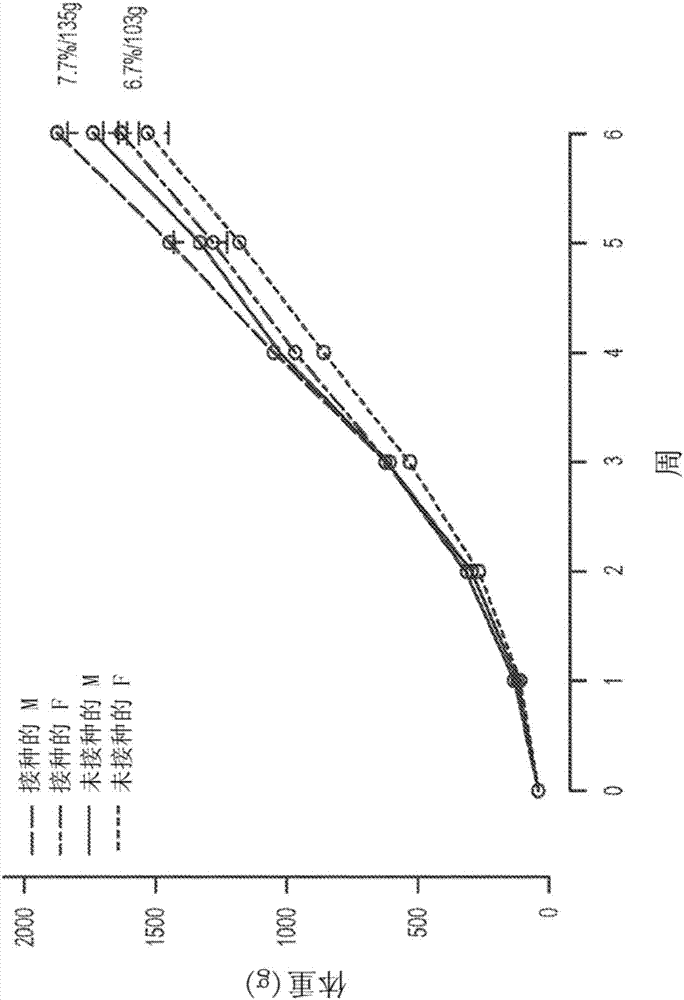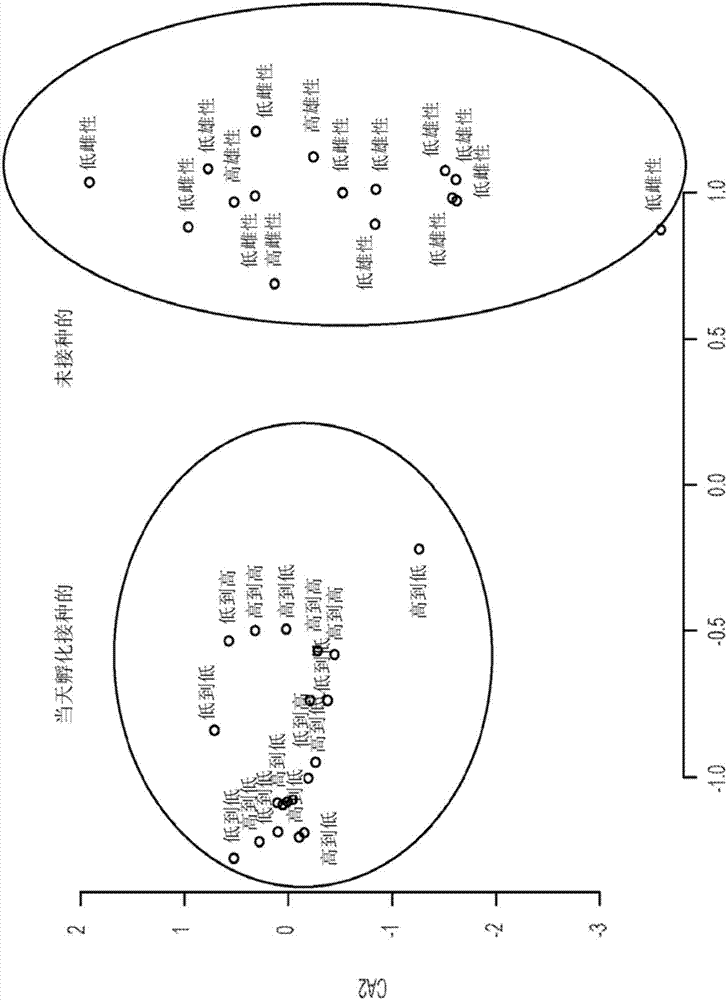Probiotic compositions and methods of use
A technology of composition and bacteria, applied in the direction of drug combination, bacteria, application, etc.
- Summary
- Abstract
- Description
- Claims
- Application Information
AI Technical Summary
Problems solved by technology
Method used
Image
Examples
Embodiment 1
[0049] Growth of chicks vaccinated with the microbiota of adult chickens compared to non-vaccinated chicks. Several experiments were performed to verify the efficacy of inoculum prepared from chicken cecal material. The cecal material was administered to chicks that hatched that day.
[0050] To obtain the cecal material, the GI tract of adult birds was removed and the cecum was excised. The caecal portion was then homogenized into contents and scrapings, mixed 3:1 with phosphate-buffered saline (PBS), and 0.2 ml per bird was orally gavaged for inoculation of day-hatch chicks. Birds were weighed at weekly intervals and RFI values were calculated on a per bird basis for the last two weeks of the experiment.
[0051] Approximately 80 newly hatched chicks were divided into two groups - those inoculated with cecal material from adult chickens, and a non-inoculated control group. The birds were then reared for 6 weeks on the ground typical of industry conditions. Chicks recei...
Embodiment 2
[0053] Identification and cultivation of gut probiotics. Samples were collected from the midgut and cecum of commercial chickens after 7, 21 and 41 days of incubation. The samples were then treated with chloroform to remove vegetative bacterial cells and incubated under anaerobic conditions. Briefly, feces were suspended in phosphate-buffered saline (PBS) and mixed with chloroform while shaking at room temperature for 60 min. The chloroform was separated by centrifugation at 2500 rpm for 20 min, and the treated sample was taken out from the culture solution with a pipette. Samples were grown on three different media and transferred until sterile colonies were obtained. Genomic DNA was sequenced on an Illumina MiSeq instrument with PE250 readout and data processing using standard genomics tools.
[0054] About 40 isolates have been obtained and characterized in several ways. First, the isolates were tested to see if they could inhibit the growth of various human and animal ...
Embodiment 3
[0058] A culture-based selective enrichment protocol for potential probiotics. A selective culture protocol was employed to selectively isolate Clostridium from the cecum of healthy chickens. Approximately 40 strains were placed in sterile culture as described in the previous examples. Briefly, exposure to formaldehyde, ethanol, and / or heat was used to kill vegetative cells, and spore-forming bacteria were selected for spreading on various growth media. Preliminary phylogenetic positions (based on 16S rRNA gene sequences) of the obtained isolates showed that most of the strains belonged to Clostridia. Of particular interest are some potentially novel taxa based on (<97% sequence similarity limit as a rule of thumb for species distinction) low 16S rRNA homology to the nearest known parent.
[0059] To assess their potential for competitive exclusion of pathogens, newly recovered isolates were tested against a panel of common enteric pathogens. Growth of at least one strain o...
PUM
 Login to View More
Login to View More Abstract
Description
Claims
Application Information
 Login to View More
Login to View More - R&D
- Intellectual Property
- Life Sciences
- Materials
- Tech Scout
- Unparalleled Data Quality
- Higher Quality Content
- 60% Fewer Hallucinations
Browse by: Latest US Patents, China's latest patents, Technical Efficacy Thesaurus, Application Domain, Technology Topic, Popular Technical Reports.
© 2025 PatSnap. All rights reserved.Legal|Privacy policy|Modern Slavery Act Transparency Statement|Sitemap|About US| Contact US: help@patsnap.com



